Forging New Paths
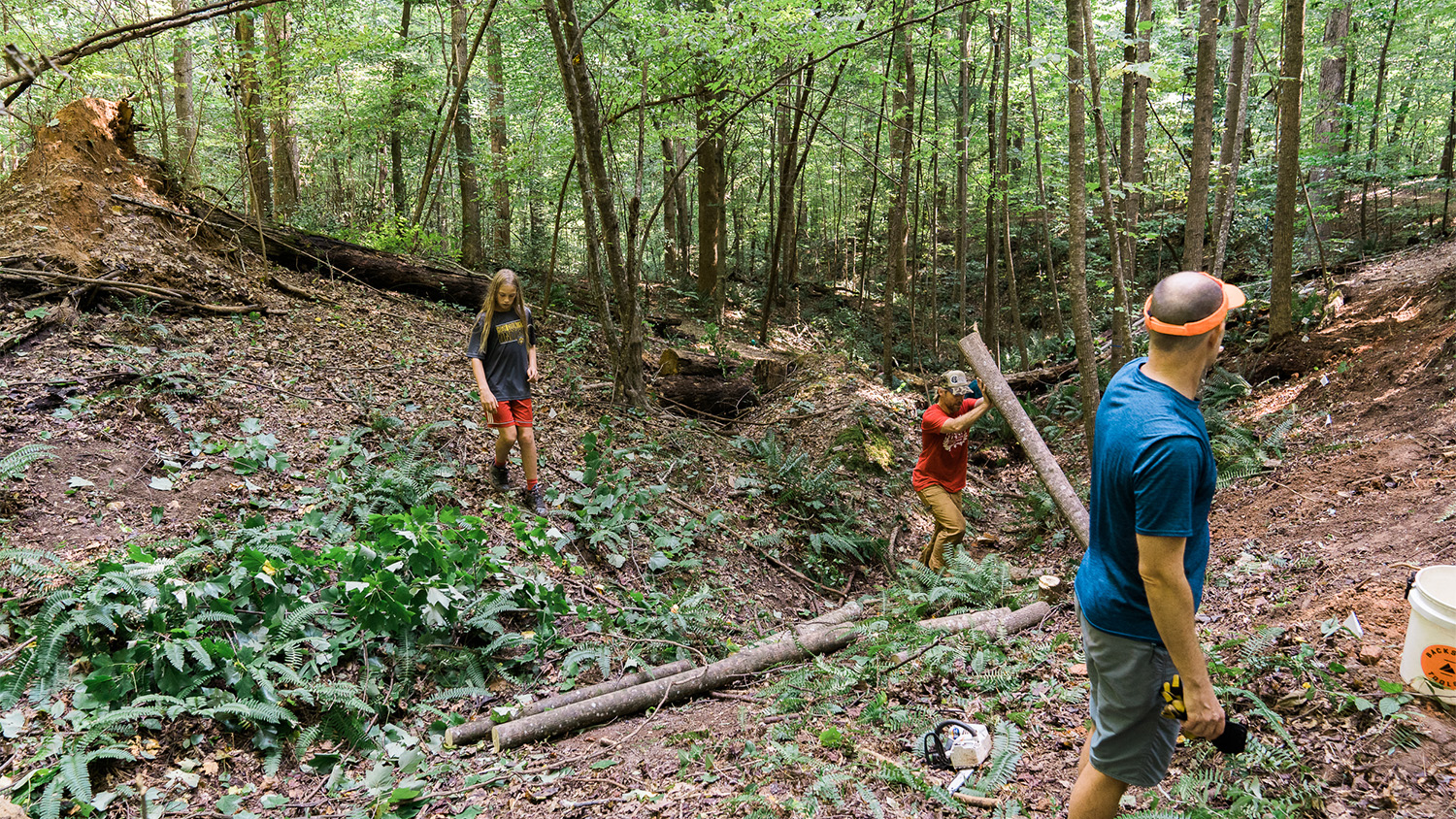
As undergraduates at NC State, Tommy Holden (biological sciences/business management ’95) and Kristian Jackson (writing and editing ’94) spent much of their time biking around fields of kudzu and up and down the steep embankments around Lake Raleigh. While much of that area has since developed into Centennial Campus, Lake Raleigh Woods is still home to a wide variety of plants and wildlife — as well as a growing network of hiking and biking trails.
Over the last several years, Holden and Jackson, as well as other constituents across the university, have worked to develop those trails by establishing a trail head, clearing and rerouting paths for hiking and biking, installing signage and more as part of the Lake Raleigh Woods Trail Plan.
“There are a lot of trails out here already, but they aren’t very well labeled,” Holden said. “For people who come out here for the first time it’s sort of hard to navigate, so we’re hoping to improve general awareness and the signage for different trails and what they’re used for so that people know what’s out here and can take advantage of it.”
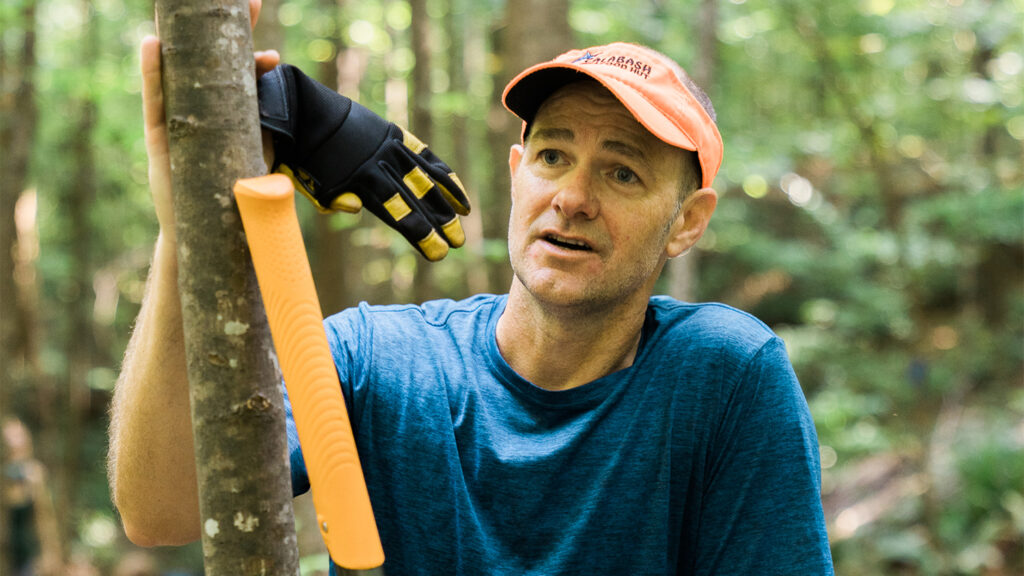
The project recently got a significant financial boost when the Department of Health and Exercise Studies (HES), for which Holden is now a teaching professor, received a $45,800 grant from the NC State University Sustainability Fund in support of the project. The grant enables the next steps in an ongoing collaboration with HES and Wellness and Recreation, along with other campus partners, to plan, design and create mountain biking and hiking trails for use by the NC State and surrounding communities. Wellness Recreation received a grant from the Sustainability Fund several years ago that paid for the project’s design portion. After the pandemic delayed an initial start, HES funded the development of the first mountain biking trail this past spring and summer.
As one of NC State’s nine “Hallowed Places,” Lake Raleigh Woods encompasses 96 acres and is situated on NC State’s Centennial Campus, south and west of Lake Raleigh. It is already used for several outdoor education classes and is an increasingly popular destination for hiking, biking, dog walking, fishing and geocaching.
“It’s a multipurpose space that is going to benefit all of NC State and the community around NC State, and we are so grateful to see the project moving forward,” said Beth Wright Fath, department head and teaching professor for HES. “Specifically for our department, it gives us additional spaces where we can teach academic classes and where students can go to connect with nature or even do homework. It’s special for the greater Raleigh community as well. Raleigh has a great commitment to green spaces and helping its residents stay active, even though we’re in an urban setting.”
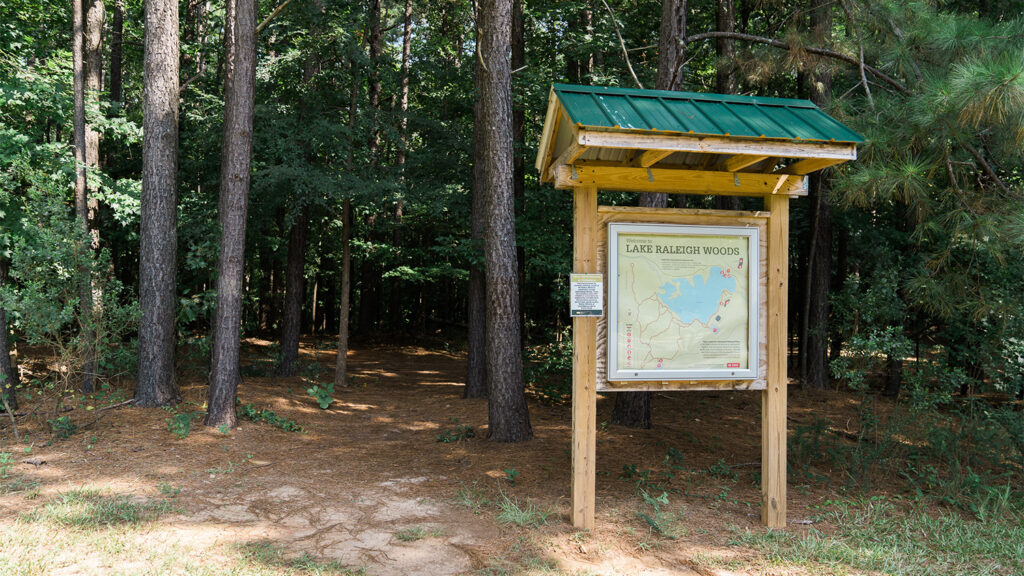
Jackson has been instrumental in the planning and execution of the Lake Raleigh Woods Trail Plan. He teaches recreation management at Appalachian State University and is a professional trail builder. Since 2010, he has served as a trail boss for Rocky Knob Trail near Boone, N.C., coordinating volunteers and overseeing trail maintenance.
“When Tommy first called me about this project it felt really special to think about taking all the training and education I’ve accumulated over 20-plus years of mountain biking and trails and come back to the place where I started riding mountain bikes and be able to give back,” Jackson said. “It’s exciting to create something new and intentional that future generations can use and where they can get inspired about riding bikes and being out in nature and being part of a community like we did.”
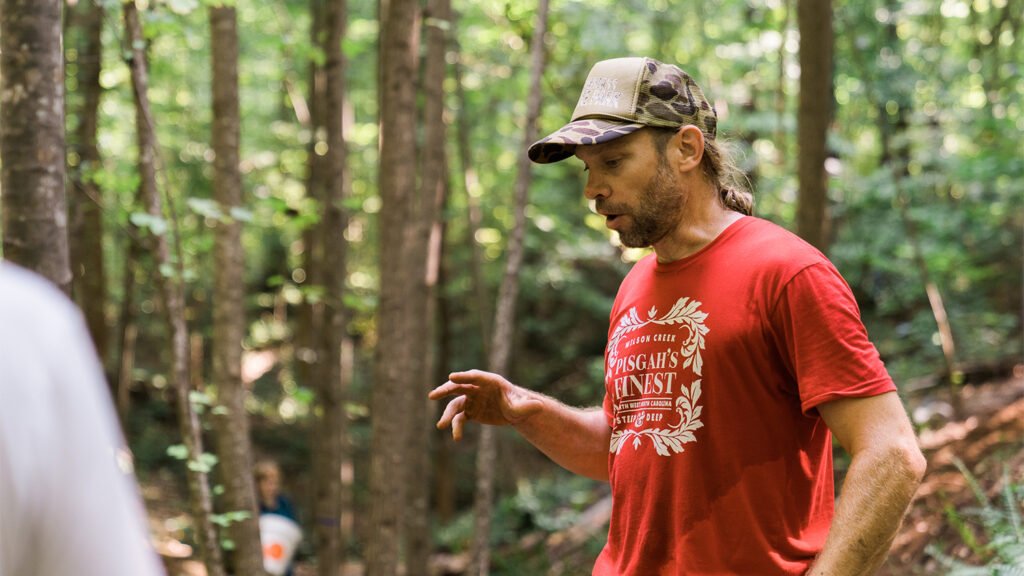
Another key contributor to the project was Scott Schneider, a senior lecturer for HES, who helped write the NC State Sustainability Fund grant proposal.
“I truly appreciate the support of the Sustainability Fund to help get the Lake Raleigh Woods trail project to fruition,” he said. “This is an exciting project that has a rich and diverse history of support from individuals in the College of Natural Resources, Wellness and Recreation, the Sustainability Office and the Department of Health and Exercise Studies. This is one of those projects that will have a long and lasting impact for the NC State students and larger community. On a personal level, I can’t wait to share the trails with my backpacking, trail running and orienteering students in the future!”
If you would like to provide financial support towards the development of the Lake Raleigh Woods Trail Plan, please make a gift to the Health and Exercise Studies Enhancement Fund. Holden is also seeking volunteers to help further develop the trail and has created an Instagram account (@LakeRaleighWoods) to help with recruitment, track progress and more easily disseminate information to the surrounding community. Anyone interested in volunteering may also contact Holden personally at tommy_holden@ncsu.edu.
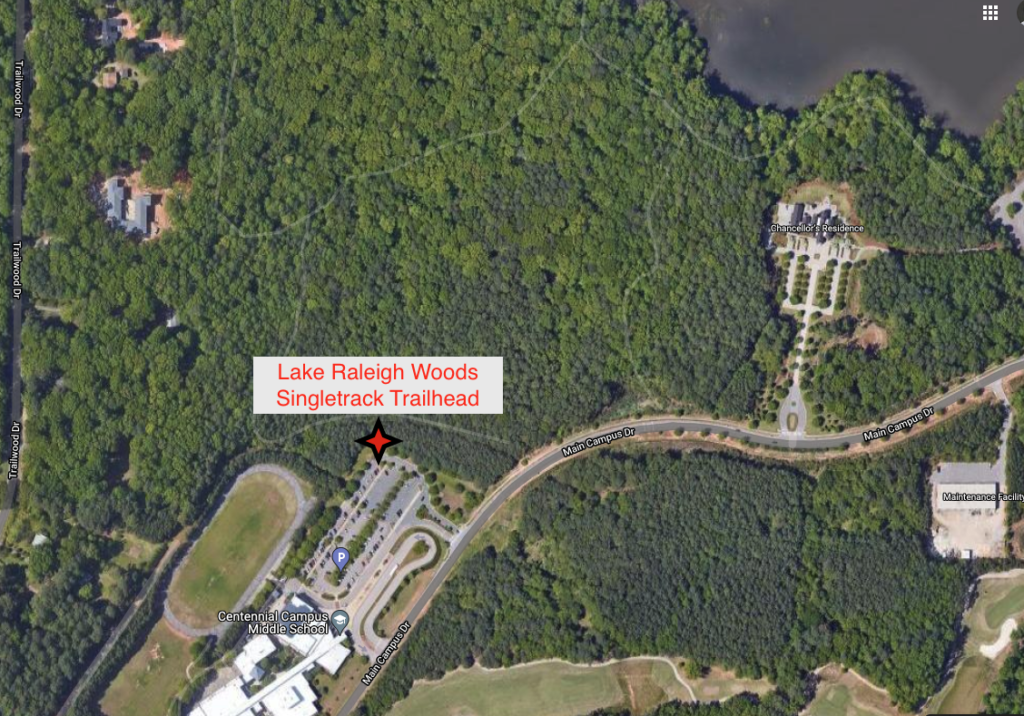
History of Lake Raleigh Woods
The history of the Lake Raleigh area can be traced back in written records to the late 1700s, when Colonel Theophilus Hunter developed the Spring Hill Plantation. From the mid-1800s to the early 1900s, the City of Raleigh acquired the land comprising Spring Hill and additional surrounding agricultural lands to develop a state hospital. An earthen dam and the Bain Water Treatment Plant were constructed along Walnut Creek in 1900 to form Lake Raleigh, which was filled in 1914. Farming of agricultural lands around the Lake and residential development north of the Lake occurred throughout the 1900s. Most recently, the development of the NC State Centennial Campus has allowed the area to continuously evolve.